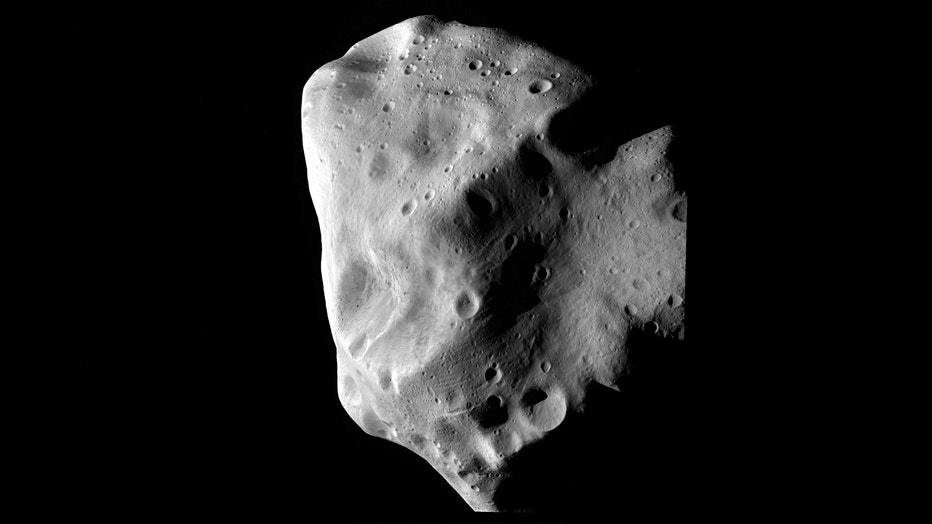‘Potentially hazardous’ asteroid the size of Seattle Space Needle to pass by Earth
LOS ANGELES - A "potentially hazardous" asteroid the size of the Space Needle in Seattle, Washington is going to pass by Earth on Tuesday, according to NASA’s Jet Propulsion Laboratory (JPL).
JPL has an asteroid watch dashboard that tracks all of the giant asteroids that make very close flybys of Earth.
The asteroid, named 2021 KT1, which is 600 feet, will pass approximately 4.5 million miles away, which may seem far but NASA defines any potentially hazardous asteroids as anything larger than 500 feet that flies 4.6 million miles away from the planet. 2021 KT1 will make its closest pass by Earth on Tuesday and will slowly float away going into Wednesday and Thursday, according to JPL’s orbit diagram.
In the next two days, two asteroids the size of a house will pass by Earth just 63 feet and 53 feet away, respectively.
This won’t be the last time Earth will have a very close call with a formidable asteroid.

FILE - Asteroid Lutetia at closest approach on Aug. 7, 2017.
RELATED: Skyscraper-sized Asteroid Apophis won’t make contact with Earth for over 100 years, scientists say
Asteroid Apophis, which was discovered in 2004, was thought to be on a collision course for Earth but scientists later announced this will no longer be the case. Instead, Apophis will do a modestly close flyby in a few years.
Apophis, which is the size of the Empire State Building in Manhattan, will pass by so close to Earth on April 13, 2029, stargazers will be able to see it without the aid of a telescope.
"A 2068 impact is not in the realm of possibility anymore, and our calculations don’t show any impact risk for at least the next 100 years," said Davide Farnocchia of NASA’s Center for Near-Earth Object Studies (CNEOS), which is managed by JPL.
"With the support of recent optical observations and additional radar observations, the uncertainty in Apophis’ orbit has collapsed from hundreds of kilometers to just a handful of kilometers when projected to 2029. This greatly improved knowledge of its position in 2029 provides more certainty of its future motion, so we can now remove Apophis from the risk list," Farnocchia added.
While small asteroids are frequent visitors and 80 to 100 tons of material falls upon Earth from space in the form of dust and small meteorites every day, CNEOS assures that "no one should be overly concerned about an Earth impact of an asteroid or comet."
Scientists and engineers are currently studying potential asteroid impacts – both finding and tracking asteroids and using simulations, in order to prevent threatening situations.
FOX News contributed to this report.

